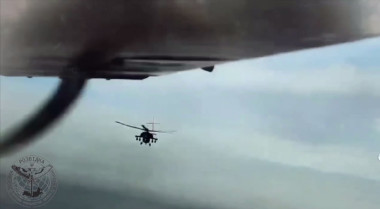How Ukraine’s enemy is also learning lessons, albeit slowly
Submission Statement
War is a continuous process of adaptation, and the Russians are no exception to this. Over the last year and a half, the Russian army has altered its tactics, updated its doctrine, and even introduced new weapons to match or neutralize Ukrainian advantages. This article summarizes a few of those adaptations to Ukrainian efforts. However, it is far from a complete survey, and I would recommend reading through RUSI’s article on the subject, which is much more complete.
This article is the fifth in a series by the Economist focused on lessons learned from the Ukraine war. The articles are written for a layman audience, but even dedicated watchers can derive value from the interviews and novel information sprinkled throughout. I plan on posting them in sequence here, and the full set of 7 articles can be found here.
Shashank Joshi is The Economist‘s defence editor. Prior to joining The Economist in 2018, he served as Senior Research Fellow at the Royal United Services Institute (RUSI) and Research Associate at Oxford University’s Changing Character of War Programme.
Russia now sends small packets of “disposable” infantry, a handful of men at a time, often under the influence of amphetamines, to “skirmish…until killed”, exposing Ukrainian positions. Larger groups of better-trained assault infantry then move in, backed by armour, mortars and artillery. If a position is taken, it is fortified within 12 hours. “The…speed with which Russian infantry dig, and the scale at which they improve their fighting positions, is noteworthy,” say Mr. Watling and Mr. Reynolds. Russian engineers have built fortifications and bridges and laid minefields.
Russian gunnery is improving. Drones can be connected to artillery batteries via the Strelets computer system, letting Ukrainian targets be struck within minutes of detection. One tactic, say the authors, “is for the Russians to withdraw from a position that is being assaulted and then saturate it with fire once Ukrainian troops attempt to occupy it.” Such “fire pockets” are one of the biggest risks to Ukraine’s counter-offensive. Russian tanks also make better use of camouflage. They fight at dusk and dawn when their temperature signature is less obvious. Russia’s reactive armour, which explodes outward, has “proven highly effective”, with some tanks surviving multiple hits.
Russian air defences, much derided on social media, are increasingly connected, allowing them to share data on incoming threats. They are shooting down a significant proportion of strikes by GMLRS—the GPS-guided rockets, fired from American HIMARS launchers—that played havoc with Russian headquarters last year. Russia has been pulling command-and-control centres farther back, dispersing and hardening them and wiring physical cables to brigades closer to the front. Meanwhile Russia’s air force, an irrelevance for much of the war, is making more use of glide bombs, in which a guidance kit is fitted to older “dumb” munitions. That poses a growing threat to Ukrainian troops moving south.

Add comment